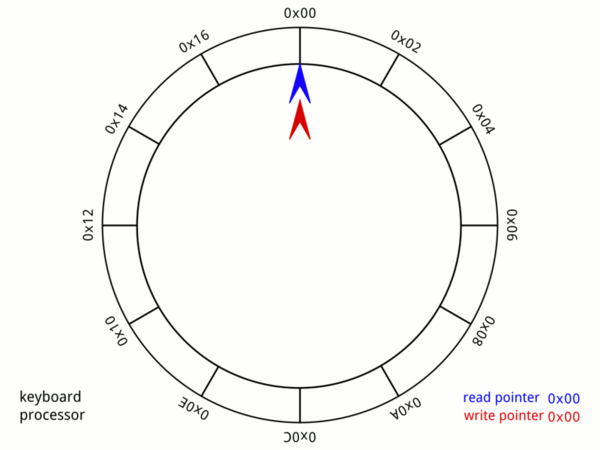Today, we are release gnet v1.0.0, enjoy this ultra-fast framework of networking!

📖 Introduction
gnet is an event-driven networking framework that is fast and lightweight. It makes direct epoll and kqueue syscalls rather than using the standard Go net package and works in a similar manner as netty and libuv, which makes gnet achieve a much higher performance than Go net.
gnet is not designed to displace the standard Go net package, but to create a networking server framework for Go that performs on par with Redis and Haproxy for networking packets handling.
gnet sells itself as a high-performance, lightweight, non-blocking, event-driven networking framework written in pure Go which works on transport layer with TCP/UDP protocols and Unix Domain Socket , so it allows developers to implement their own protocols(HTTP, RPC, WebSocket, Redis, etc.) of application layer upon gnet for building diversified network applications, for instance, you get an HTTP Server or Web Framework if you implement HTTP protocol upon gnet while you have a Redis Server done with the implementation of Redis protocol upon gnet and so on.
gnet derives from the project: evio while having a much higher performance and more features.
🚀 Features
- High-performance event-loop under networking model of multiple threads/goroutines
- Built-in load balancing algorithm: Round-Robin
- Built-in goroutine pool powered by the library ants
- Built-in memory pool with bytes powered by the library bytebufferpool
- Concise APIs
- Efficient memory usage: Ring-Buffer
- Supporting multiple protocols/IPC mechanism: TCP, UDP and Unix Domain Socket
- Supporting two event-driven mechanisms: epoll on Linux and kqueue on FreeBSD
- Supporting asynchronous write operation
- Flexible ticker event
- SO_REUSEPORT socket option
- Built-in multiple codecs to encode/decode network frames into/from TCP stream: LineBasedFrameCodec, DelimiterBasedFrameCodec, FixedLengthFrameCodec and LengthFieldBasedFrameCodec, referencing netty codec, also supporting customized codecs
- Supporting Windows platform with
event-driven mechanism of IOCPGo stdlib: net - Additional load-balancing algorithms: Random, Least-Connections, Consistent-hashing and so on
- TLS support
- Implementation of
gnetClient
💡 Key Designs
Networking Model of Multiple Threads/Goroutines
Multiple Reactors
gnet redesigns and implements a new built-in networking model of multiple threads/goroutines: 『multiple reactors』 which is also the default networking model of multiple threads in netty, Here's the schematic diagram:
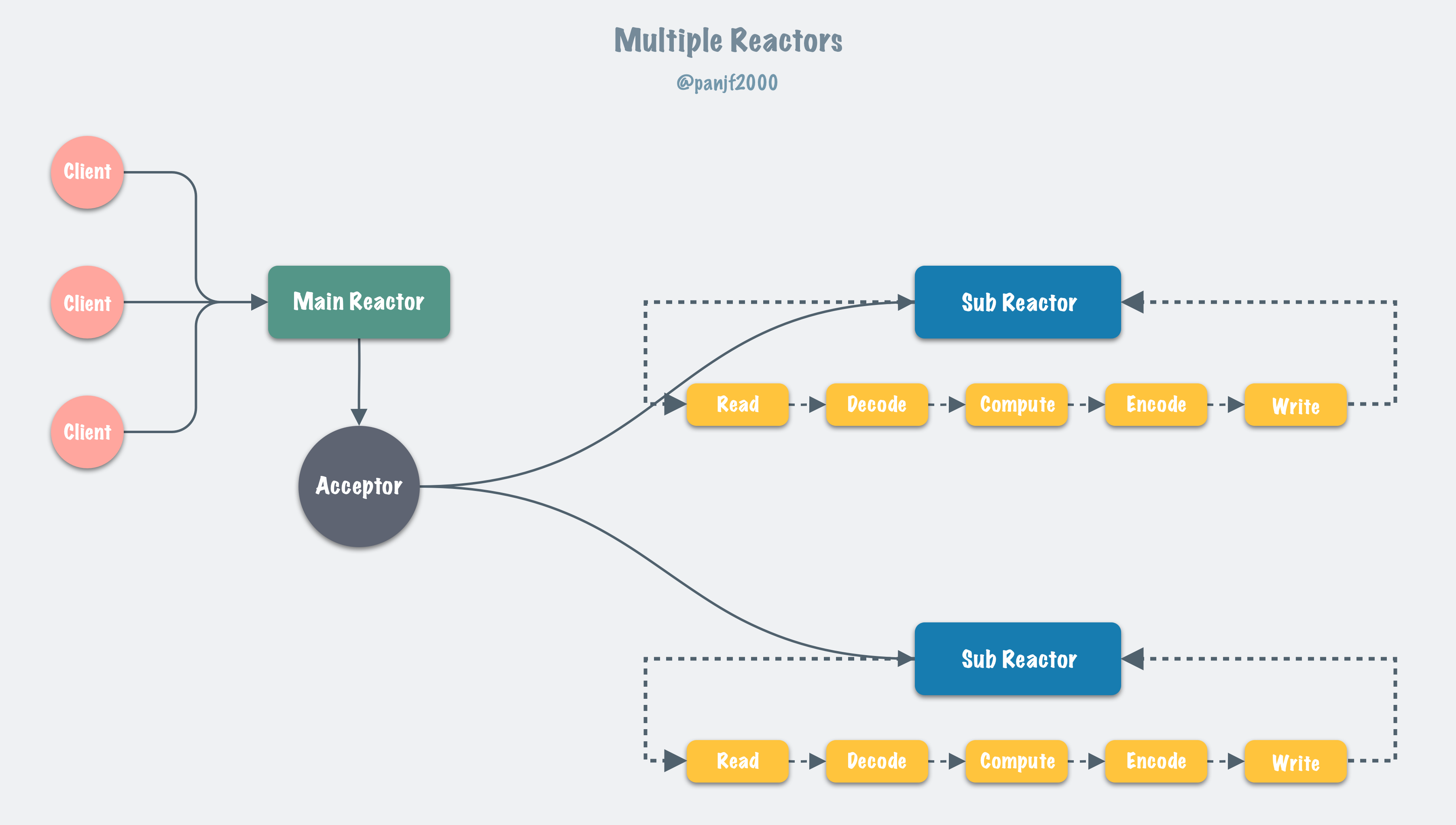
and it works as the following sequence diagram:
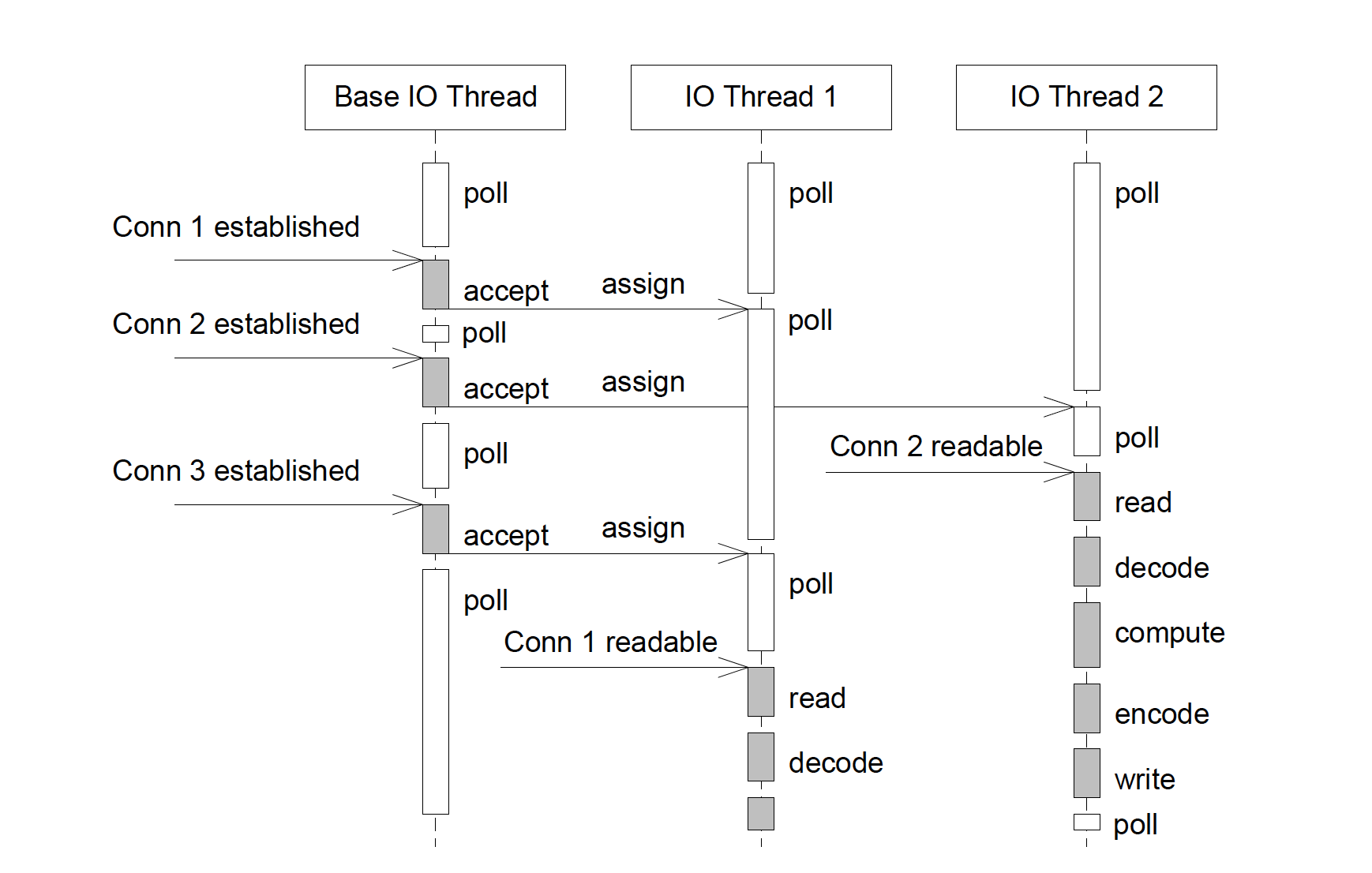
Multiple Reactors + Goroutine Pool
You may ask me a question: what if my business logic in EventHandler.React contains some blocking code which leads to blocking in event-loop of gnet, what is the solution for this kind of situation?
As you know, there is a most important tenet when writing code under gnet: you should never block the event-loop goroutine in the EventHandler.React, which is also the most important tenet in netty, otherwise, it will result in a low throughput in your gnet server.
And the solution to that could be found in the subsequent networking model of multiple threads/goroutines in gnet: 『multiple reactors with thread/goroutine pool』which pulls you out from the blocking mire, it will construct a worker-pool with fixed capacity and put those blocking jobs in EventHandler.React into the worker-pool to make the event-loop goroutines non-blocking.
The networking model:『multiple reactors with thread/goroutine pool』dissolves the blocking jobs by introducing a goroutine pool, as shown below:
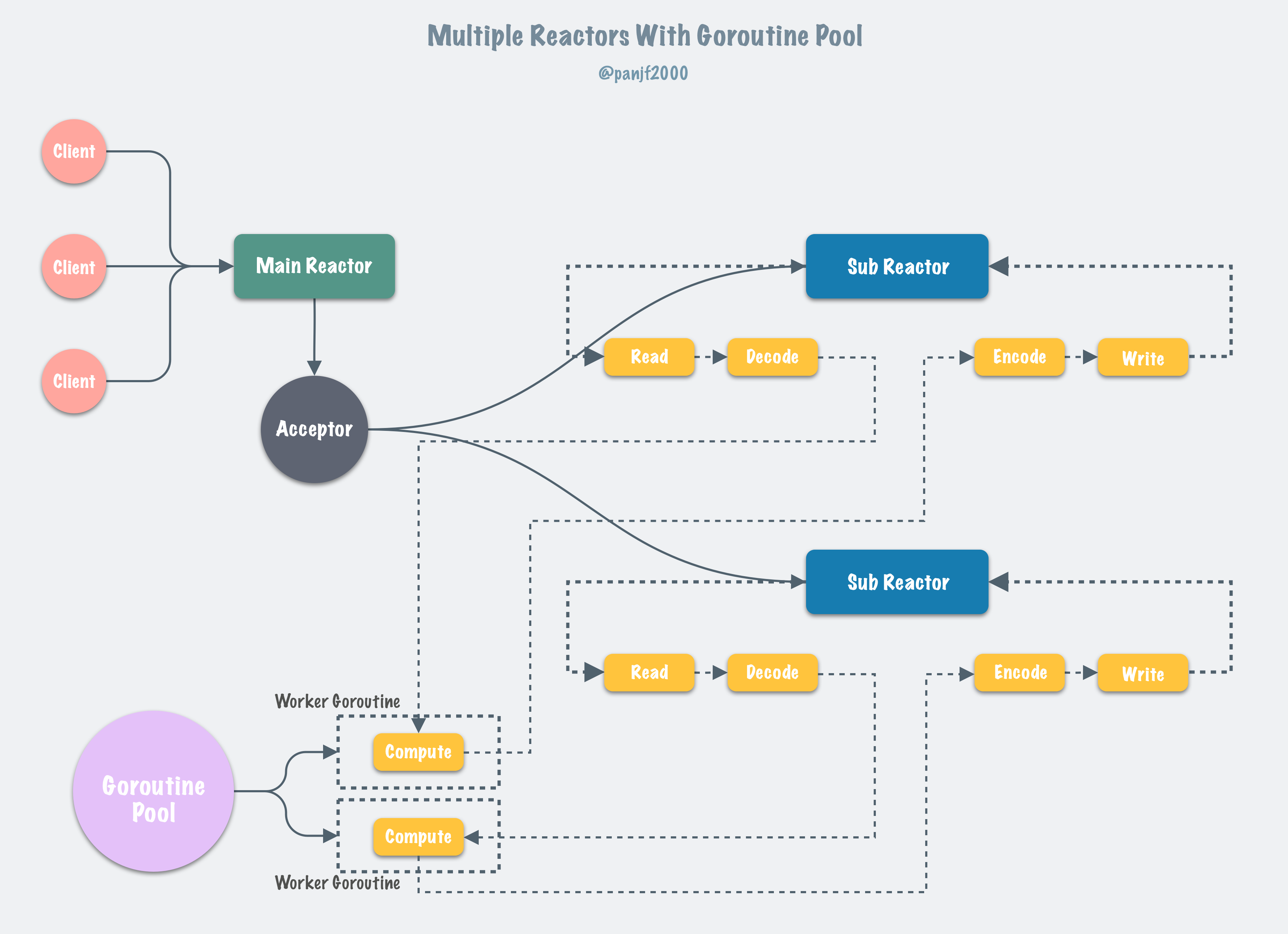
and it works as the following sequence diagram:
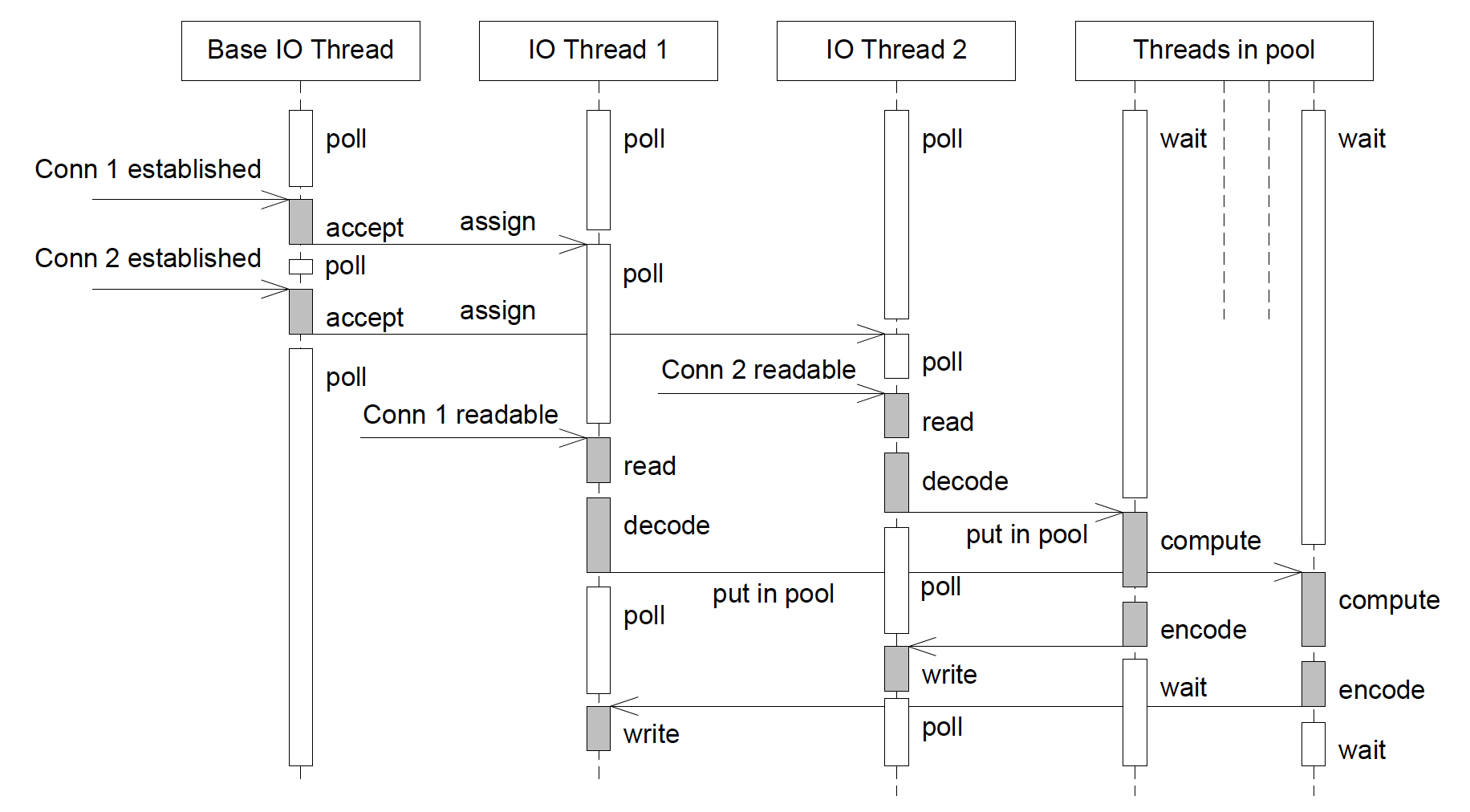
gnet implements the networking model:『multiple reactors with thread/goroutine pool』by the aid of a high-performance goroutine pool called ants that allows you to manage and recycle a massive number of goroutines in your concurrent programs, the full features and usages in ants are documented here.
gnet integrates ants and provides the pool.goroutine.Default() method that you can call to instantiate a ants pool where you are able to put your blocking code logic and call the function gnet.Conn.AsyncWrite([]byte) to send out data asynchronously after you finish the blocking process and get the output data, which makes the goroutine of event-loop non-blocking.
The details about integrating gnet with ants are shown here.
Reusable and auto-scaling Ring Buffer
There are two ring-buffers inside gnet: inbound buffer and outbound buffer to buffer and manage inbound/outbound network data, ring-buffer inside gnet is designed and tuned to reuse memory and be auto-scaling on demand.
The purpose of implementing inbound and outbound ring-buffers in gnet is to transfer the logic of buffering and managing network data based on application protocol upon TCP stream from business server to framework and unify the network data buffer, which minimizes the complexity of business code so that developers are able to concentrate on business logic instead of the underlying implementation.
